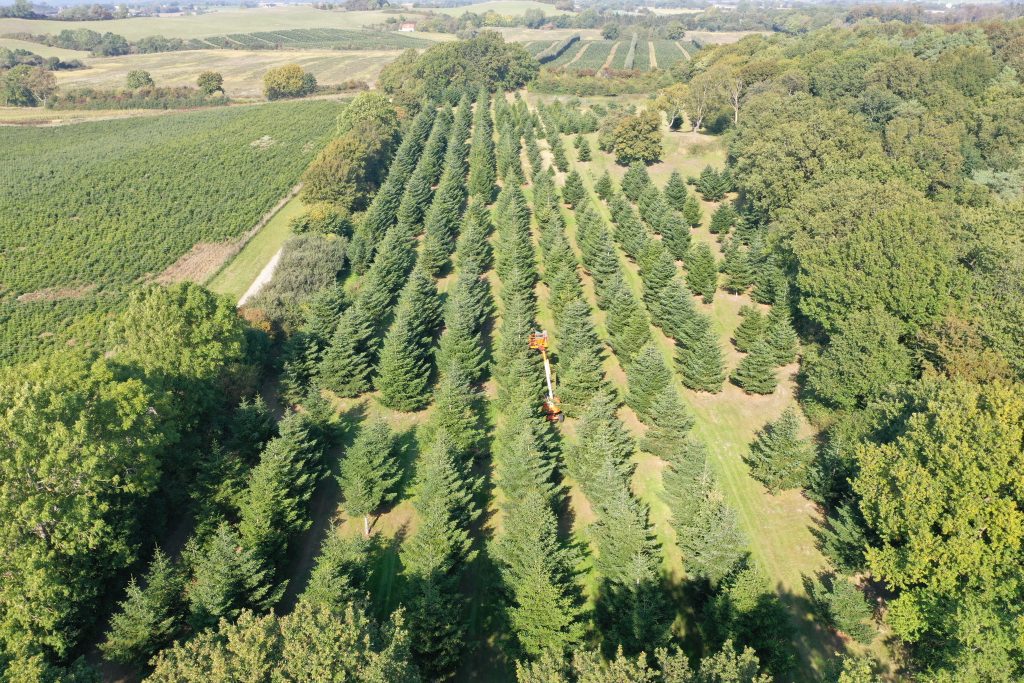The seed orchard consists of 17 carefully selected plus trees, all of which aim to optimize the proportion of prime trees in the offspring. The scions, which are the genetic basis for the seed plantation, originate from the Silkeborg Nordskov FP259 seed plantation. FP259 is a descendant of the old Tversted seed breeding stand from 1904, which probably originated in the Borjomi area of Georgia. The seed orchard is the first established out of four in total. It is located on Lundbygaard Estate in southern Zealand. The height above sea level is 30 m. The vegetation is 2 ha, planted in 2007.
The seed breeding stands Tversted F526 and F527, from which the clones originate, are characterized by a very attractive shape with good bud structure and good needle position, as well as large, full needles. Tversted springs up late with an associated low risk of late frost damage. Originally, clones of 20 plus trees were grafted, but 3 of these have been genetically thinned out due to Neonectria and noted needle loss. During the selection, needle loss tests and post-harvest quality tests were carried out on the material, so the offspring are expected to be healthier than the mother stand.
The clones included in the seed plantation have all been tested. Therefore, their breeding values are known and thus the seed plantation’s offspring can be expected to have the following characteristics in relation to Tversted F526 and F527. It is expected that there will be 14% more prima trees in the offspring. Vitality is lower, which results in less growth and thus less work with regulation. On average, the offspring will be approx. 10 cm. less than Tversted F526 and F527 after one life cycle. The width of the trees is also correspondingly smaller, which results in narrower trees. The offspring from the Lundbyggard 1 seed orchard leaf out later than Tversted and Ambrolauri, although only marginally. The post-harvest quality is also better, i.e. less risk of needle loss.
The seed orchard Lundbygaard 1 has been producing seeds on a commercial scale since 2015. It is cared for professionally with a view to optimal seed quality, which means that it is sprayed for Megastigmus insects, fertilized and inspected frequently for pests. This means that the technical quality of the seed is top notch with a high germination percentage and great vitality, which provides the basis for optimal plants from the nursery to the Christmas tree grower.

